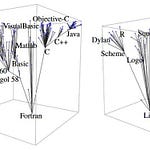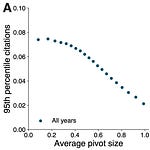Hello! Here’s what’s new this week on New Things Under the Sun:
New Articles
I’ve put up a new article titled Science as a map of unfamiliar terrain. From the introduction:
Two things seem to be true: more science leads to more technological progress, but only a minority of new technologies directly rely on science. So what kinds of technology benefit most from a scientific foundation to draw on?
One way to conceptualize the difference between science and technology, is that scientific knowledge tells us about how the world works, while technology is about capturing and orchestrating regularities in nature to do something we think is useful. But by definition, a new technology has to step into the unknown and try something new - either relying on novel natural processes, or orchestrating existing ones in novel ways. Since science gives us knowledge about how natural processes work and interact, it can provide an imperfect map of this unknown terrain, helping inventors step wisely. We can see this is indeed the case with a set of papers, each of which looks to patents as a measure of invention, but which take varied approaches to measuring the “reliance on science” and the degree to which the terrain an inventor is exploring is “unknown.”
You can also listen to a podcast version of this article at the top of this email.
Updated articles
The article Are ideas getting harder to find because of the burden of knowledge? has been updated to include a discussion of a 2016 paper by Ajay Agrawal, Avi Goldfarb, and Florenta Teodoris. The previous version of “are ideas getting harder to find because…” presented a lot of evidence that scientists, engineers, and inventors are:
spending more time in training
working in ever larger teams
specializing more and more
This is all consistent with Ben Jones’ “burden of knowledge” hypothesis, which argues these trends are a natural by-product of the tendency for new problems to require the application of ever more knowledge to solve. The way we throw more knowledge at problems is by assembling bigger teams of narrower and more deeply trained specialists.
But the evidence presented is all correlational. It mostly shows trends over time, and it would be nice to have some quasi-experimental evidence about this theory. That’s where Agrawal, Goldfarb, and Teodoris come in:
Suppose we wanted to conduct an experiment to test Jones’ story. What would that look like? What if we could take a set of similar fields and then randomly raise the burden of knowledge in some but not others. Then, we could see if the fields with higher burdens responded by forming bigger teams, specializing, and spending more time in school. But to do an experiment like that, we would need to dump a bunch of new knowledge into some fields but not others. This isn’t easy to do in a lab. But Agrawal, Goldfarb, and Teodoris argue the collapse of the Soviet Union provides just such a quasi-experimental context.
To jump straight to the new discussion, click here.
What else?
The New York Times had a nice write-up of some research on innovation and remote work, featuring links to New Things Under the Sun (and a quote from me).
That’s all for now; thanks!







